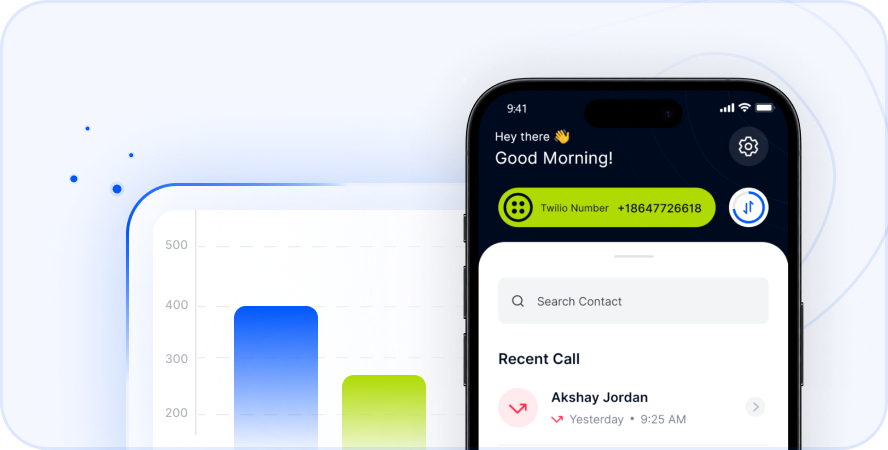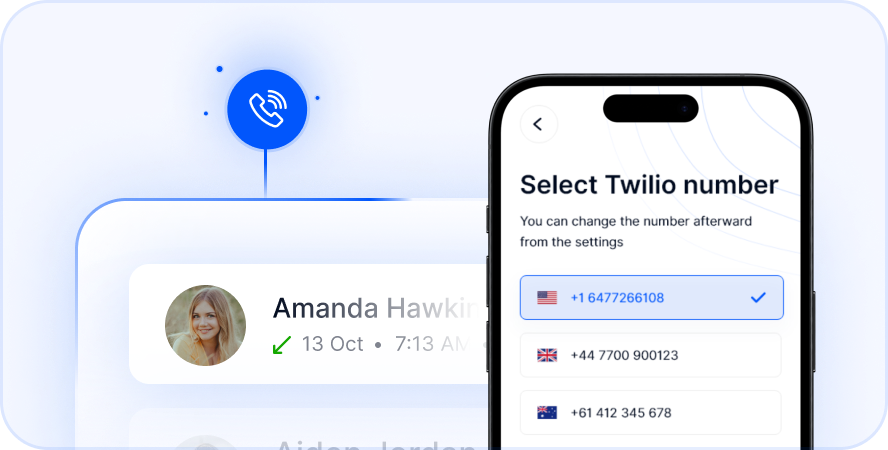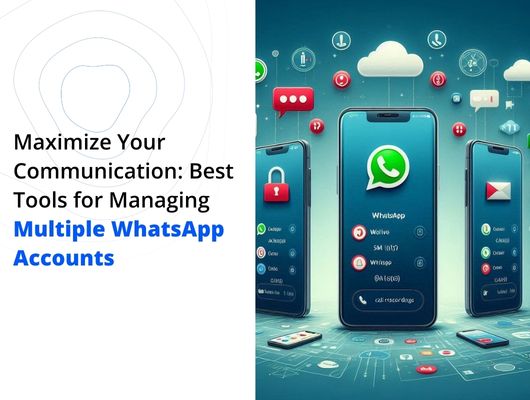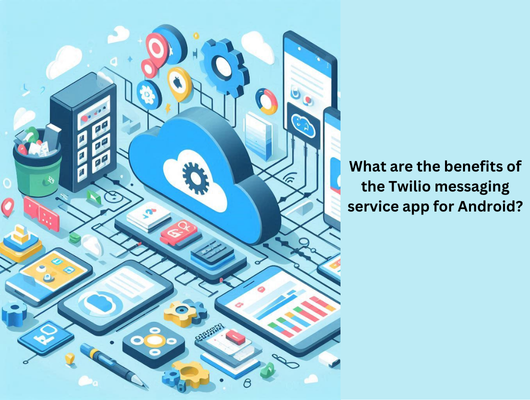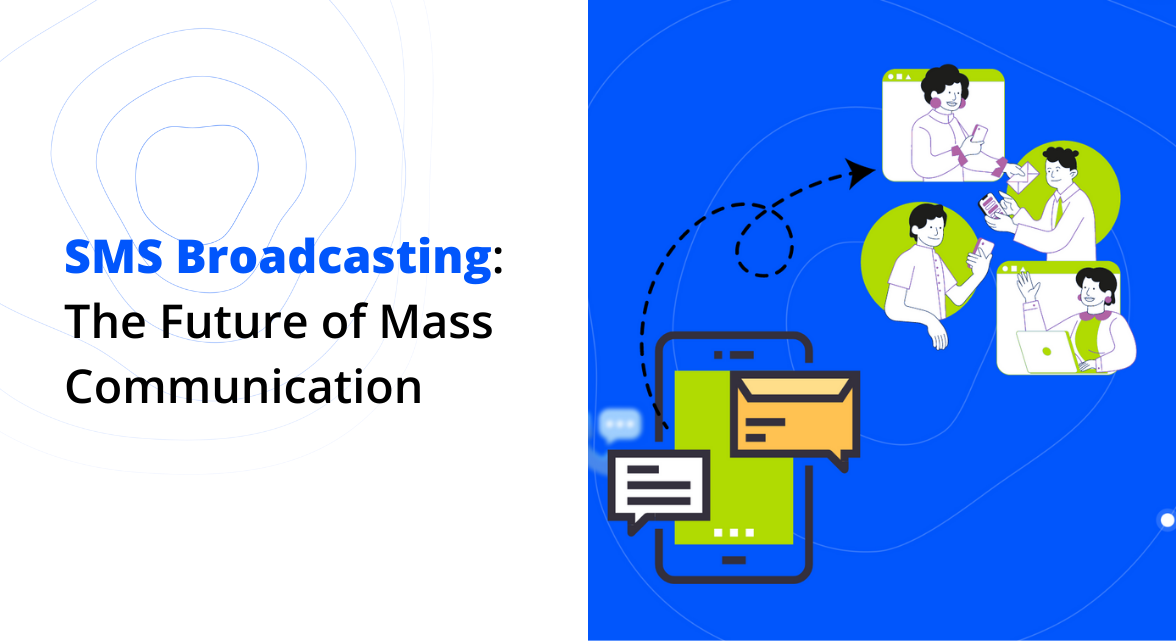
effective communication is not just an option; it’s a necessity. Consumers receive countless messages daily through email, social media, and various online channels. Cutting through this digital noise to reach your audience directly presents a significant challenge. This is where SMS broadcasting emerges as a powerful, direct, and highly effective communication method. It offers a simple yet potent way to connect with many people at once, whether you are running a marketing campaign, sending time-sensitive alerts, or sharing important team updates.
Leveraging the inherent simplicity and immediacy of text messaging allows businesses to bypass crowded inboxes and noisy social feeds. You can communicate directly with your target audience, ensuring your message gets seen quickly. This approach contrasts sharply with many other digital communication forms that struggle for attention. This blog explores the world of SMS broadcasting. You will learn why it is vital for modern communication strategies and how you can integrate it smoothly into your operations. Understanding its mechanics and benefits is the first step toward unlocking its full potential. shows that 86% of consumers feel that SMS is a trusted communication channel, highlighting its credibility.
Understanding SMS Broadcasting
At its core, SMS broadcasting means sending a single text message to a large number of recipients simultaneously. Think of it as a broadcast signal, but delivered straight to individual mobile phones. It is a highly efficient method for communicating with a mass audience in real time. Businesses use it for various purposes, including delivering urgent messages, distributing promotional offers, and sending out critical updates.
This method stands apart due to its unique characteristics. Unlike email or social media posts that require active user engagement (opening an app, checking an inbox), an SMS message appears directly on a recipient’s phone screen, often with an immediate notification. This immediacy is a key factor in its effectiveness. It ensures that your message is not only delivered quickly but is also likely to be noticed right away by the recipient.
How SMS Broadcasting Works
Modern SMS broadcasting relies on specialized software platforms or APIs. Businesses upload a list of phone numbers to the platform. They then compose the message they want to send. The platform handles the technical process of distributing that message to every number on the list almost instantly.
These platforms often provide features like:
- Contact list management
- Message scheduling
- Delivery reporting
- Reply handling
This technical infrastructure makes it easy for businesses to manage large-scale messaging campaigns efficiently without requiring complex manual processes. It automates the delivery, saving significant time and effort.
Why SMS Broadcasting is Crucial for Modern Business Communication
SMS broadcasting offers distinct advantages that make it an indispensable tool in today’s communication landscape. Its effectiveness stems from several key factors that differentiate it from other channels. These benefits directly contribute to higher engagement and better communication outcomes for businesses of all sizes.
Here’s why it stands out:
Unparalleled Open and Engagement Rates
SMS messages boast incredibly high open rates. Research consistently shows open rates reaching up to 98%, often within minutes of delivery. This is significantly higher than the average open rates for emails, which typically hover around 20-30%. This high engagement means your message is almost guaranteed to be seen.
The brevity of SMS messages also contributes to high engagement. Recipients can quickly read and understand the message’s core content. This format is well-suited for busy consumers who prefer fast, direct information. Getting straight to the point makes SMS effective for time-sensitive information.
Instant and Direct Delivery
In today’s fast-paced world, speed matters. SMS broadcasting allows businesses to deliver messages instantly. Whether you need to announce a flash sale, send an emergency alert, or confirm an appointment, the message arrives on the recipient’s phone almost immediately.
This immediacy is critical for time-sensitive communications. It ensures that your audience receives crucial information when they need it most, enabling quick decisions or actions. No other channel offers this level of direct and instant access to a recipient’s personal device.
Cost-Effectiveness and High ROI
Compared to traditional marketing channels like television, radio, or print advertising, SMS broadcasting is remarkably affordable. This makes it an excellent option for businesses operating on tight marketing budgets, including small and medium-sized enterprises.
The low cost per message combined with high engagement rates typically translates into a strong return on investment (ROI). Businesses can achieve significant results in terms of sales, customer action, or information dissemination without incurring high expenses. It is a lean yet powerful marketing and communication tool.
Wide Reach Across All Demographics
Almost everyone owns a mobile phone capable of receiving text messages. This makes SMS broadcasting a universal communication tool. It reaches individuals regardless of their smartphone ownership status, internet access availability, or technical proficiency.
This wide accessibility ensures that your message can reach a broad audience spectrum. It cuts across different demographics and geographical locations, making it ideal for widespread announcements or campaigns that need to reach a diverse group of people quickly and reliably.
Enhanced Personalization and Targeting
While SMS broadcasting sends messages to many people, modern platforms allow for significant personalization and targeting. Businesses can segment their contact lists based on various criteria. These criteria include demographics, purchase history, location, or interests.
By tailoring messages to specific segments, you increase the relevance of your communication. Personalized messages, such as addressing recipients by name, or sending offers based on past behavior, are more likely to resonate with the audience. This targeted approach boosts engagement and improves campaign performance.

Applications of SMS Broadcasting Across Various Industries
SMS broadcasting is a versatile tool. Its utility extends far beyond simple marketing promotions. Many different sectors use it effectively for various communication needs. Its direct nature and high reach make it suitable for critical updates, operational messages, and customer engagement across diverse fields.
Here are examples of how different industries benefit from SMS broadcasting:
Healthcare
Healthcare providers use SMS broadcasting for vital patient communication. They send appointment reminders to reduce no-shows. They also share health tips or notifications about clinic updates. In emergencies, it’s a rapid way to send alerts or instructions to patient groups. For example, a clinic might send an SMS reminder 24 hours before an appointment and again an hour before. They can also notify patients about flu shot availability or changes in operating hours.
Education
Schools and universities rely on SMS broadcasts for critical communication with students and parents. They announce school closures due to weather. They send reminders about important deadlines or events. Emergency alerts, like lockdown procedures or safety notifications, can be sent quickly and reliably via SMS. For instance, a university might text students about class cancellations or campus event reminders.
Real Estate
Real estate professionals use SMS to keep potential buyers and sellers informed. Agents can send instant notifications about new property listings that match a client’s criteria. They can also announce open house schedules or notify interested parties about price changes. Given the speed of the real estate market, instant SMS updates are crucial for competitive advantage. A real estate agent might text a client immediately when a new property matching their preferences hits the market.
Retail and E-Commerce
Retailers frequently use SMS broadcasting for promotional activities. They announce flash sales, special discounts, or new product arrivals. Personalized offers based on a customer’s purchase history can also be delivered via text. SMS is effective for driving traffic to physical stores or e-commerce websites and boosting immediate sales. For example, a clothing store might text loyal customers about an exclusive discount code.
Non-Profits and Charities
Non-profit organizations use SMS broadcasting to connect with their supporters. They send calls for donations or updates on fundraising campaigns. Event invitations, volunteer recruitment messages, and news about their cause’s impact are also common uses. SMS provides a direct line to engage donors and volunteers effectively. A charity might send an SMS update about reaching a fundraising goal or an invitation to a volunteer orientation session.
Financial Services
Banks and financial institutions use SMS for security alerts, transaction notifications, and account updates. They can send fraud alerts instantly or notify customers of large withdrawals. Promotional offers for new services are also sent via SMS. For example, a bank might text a customer about suspicious activity on their account or a special offer on a new credit card.
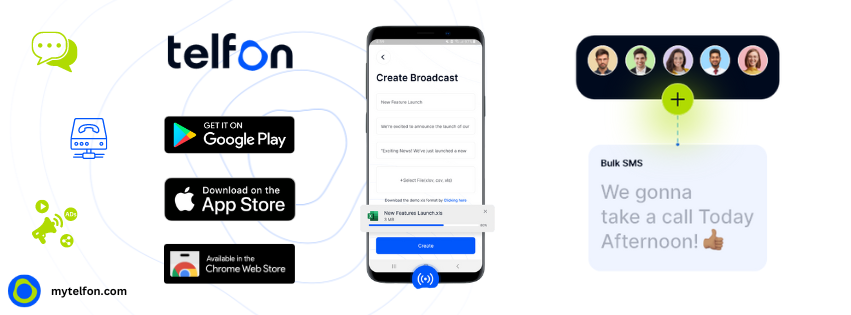
Strategies for Running Successful SMS Broadcast Campaigns
Simply sending bulk messages is not enough to guarantee success. Effective SMS broadcasting requires strategic planning and careful execution. By following best practices, you can maximize the impact of your campaigns, improve engagement, and achieve your communication goals.
Here are key strategies to implement for effective SMS broadcasting:
Choosing the Right Platform for SMS Broadcasting: Telfon
Implementing a successful SMS broadcasting strategy requires a reliable and efficient platform. The right tool can streamline your efforts, manage contacts, and provide essential features for effective communication. When evaluating options, consider platforms that offer robust capabilities for bulk messaging, personalization, and integration with other business tools.
Telfon is a comprehensive communication solution designed to help businesses manage various communication channels from a single interface. It provides robust features specifically tailored for SMS broadcasting alongside other capabilities like VoIP calls and WhatsApp messaging.
Key features of Telfon relevant to SMS broadcasting include:
- Bulk SMS Capabilities: Easily send SMS messages to large groups of contacts simultaneously.
- Send and Receive SMS: Manage two-way SMS communication. You can send broadcasts and receive replies within the platform, allowing for seamless interaction.
- Multi-Number Management: Use and manage multiple virtual phone numbers from different countries within the same account. This is useful for sending targeted messages with local numbers or segmenting different campaigns.
- Integration with Sales Tools: Connect Telfon with popular CRM or sales platforms to align your messaging with customer data and sales processes.
- WhatsApp Integration: Extend your mass messaging capabilities to WhatsApp, reaching audiences on their preferred messaging app (with multi-WhatsApp account support).
- User Analytics: Monitor campaign performance, user activity, and number performance (available in business plans).
Telfon’s platform simplifies the technical aspects of SMS broadcasting. It offers features that enhance efficiency and allow for integrated communication strategies. With a pay-as-you-go pricing model, it provides flexibility and cost savings for both individuals and businesses. Telfon serves over 30,000 users and hundreds of companies globally, available on Google Play, App Store, and Chrome Web Store.
The Future Landscape of SMS Broadcasting
The future of SMS broadcasting remains strong, driven by its inherent reliability and the ubiquity of mobile phones. While new messaging apps emerge, the direct nature of SMS ensures its continued relevance. Advancements like 5G technology further enhance mobile connectivity, making SMS delivery even faster and more reliable.
We are likely to see increased integration of SMS broadcasting with other communication channels and business systems. Platforms like Telfon, which combine SMS with VoIP and WhatsApp, represent this trend towards unified communication solutions. Furthermore, the evolution of SMS into Rich Communication Services (RCS) promises more interactive and visually rich messaging experiences directly within the default messaging app, potentially enhancing future broadcast capabilities.
As consumers continue to value immediate and personalized communication, businesses that effectively leverage SMS broadcasting will maintain a competitive edge. It’s a channel that cuts through the clutter and delivers messages directly into the hands of the audience, making it a foundational element of modern communication strategies.
Build an Opt-In List
This is the most critical step. You must have explicit permission from individuals to send them SMS messages. Using an opt-in process ensures compliance with regulations like the TCPA in the US or GDPR in Europe. You must also provide a clear way for recipients to opt out. Using a reputable platform that helps manage consent is crucial for legal compliance.
Q1: Is SMS broadcasting legal?
Yes, SMS broadcasting is legal, but it must be done compliantly. Regulations like the Telephone Consumer Protection Act (TCPA) in the United States and GDPR in Europe require businesses to obtain express consent (opt-in) from recipients before sending them SMS messages. You must also provide a clear way for recipients to opt out. Using a reputable platform that helps manage consent is crucial for legal compliance.
Q2: How do businesses get people to opt in to receive SMS messages?
Businesses can use various methods to obtain opt-in consent. Common methods include:
- Having customers text a specific keyword (like “JOIN”) to a shortcode or phone number.
- Including an opt-in checkbox on website forms (e.g., newsletter signup, checkout page).
- Getting verbal consent during a phone call (which often requires recording).
- Asking for consent at the point of sale in a physical store.
Always clearly explain what types of messages subscribers will receive.
Q3: What kind of messages are best suited for SMS broadcasting?
SMS is ideal for concise, time-sensitive, and high-value messages. Examples include:
- Flash sales and limited-time offers.
- Appointment reminders and confirmations.
- Shipping notifications and delivery updates.
- Urgent alerts or critical updates (e.g., system downtime, weather warnings).
- Password resets or security codes.
- Customer service follow-ups.
- Event reminders.
Avoid using SMS for lengthy content or information that is not immediately valuable or time-sensitive.
Q4: How can I measure the success of my SMS broadcasting campaigns?
Key metrics to track include:
- Delivery Rate: The percentage of messages successfully delivered.
- Open Rate: While hard to track precisely like email, you can infer opens based on delivery notifications and subsequent actions.
- Click-Through Rate (CTR): The percentage of recipients who clicked a link in the message.
- Conversion Rate: The percentage of recipients who completed a desired action (e.g., made a purchase, used a coupon) after receiving the SMS.
- Opt-Out Rate: The percentage of people who unsubscribed. A high opt-out rate indicates issues with content relevance, frequency, or timing.
Analyzing these metrics helps you understand what works and what needs improvement.
Q5: Is SMS broadcasting suitable for customer support?
Yes, SMS can be a valuable channel for customer support, particularly for quick inquiries, sending updates about support tickets, or providing links to help resources. Two-way SMS allows customers to reply to broadcasts or initiate conversations, enhancing the support experience. It offers a convenient, immediate channel for customers who prefer texting over calling or emailing for simple issues.
Conclusion
SMS broadcasting is a transformative tool for businesses navigating the complexities of modern communication. Its inherent advantages—high engagement, instant delivery, cost-effectiveness, and broad reach—make it an indispensable component of any comprehensive communication strategy. From delivering critical alerts in healthcare to announcing flash sales in retail, its applications are vast and impactful across numerous industries.
By adopting strategic approaches like audience segmentation, providing value, and adhering to opt-in best practices, businesses can harness the full power of SMS broadcasting. It offers a direct line to your audience, ensuring your message cuts through the digital noise and receives the attention it deserves. Solutions like Telfon provides the necessary platform and features to implement these strategies effectively, integrating SMS broadcasting with other communication channels for a unified approach.
Incorporating effective SMS broadcasting into your workflow enhances communication efficiency. It also positions your brand as one that communicates directly, reliably, and valuably with its audience. In today’s fast-paced digital landscape, this capability provides a significant competitive advantage.


